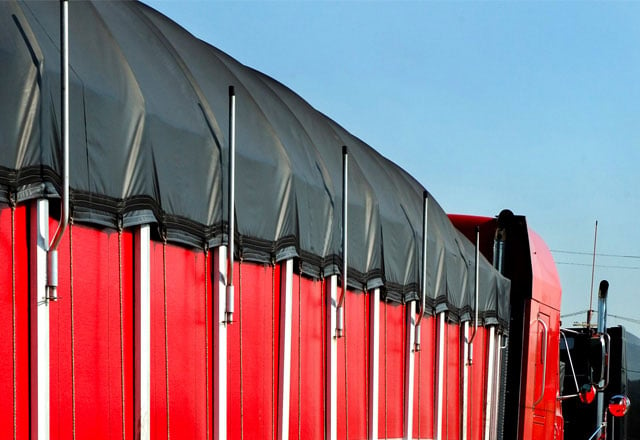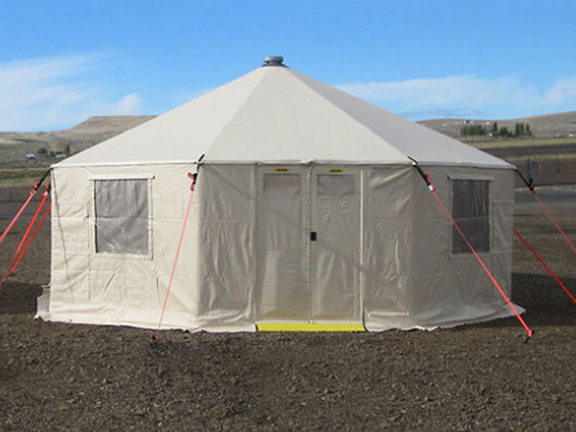Radio Frequency (RF) welding, also known as dielectric welding or high frequency welding, utilizes hf welding machines to achieve strong and precise welds. This sophisticated process employs an electromagnetic field generated by high-frequency radio waves to heat and melt plastic surfaces, ensuring durability and preventing leaks. By applying radio frequency energy, the plastic surfaces are heated, causing them to melt and blend seamlessly. The resulting weld is robust, durable, and airtight, making it an ideal choice for applications requiring strong hermetic seals. This process is particularly effective for materials with polar molecules, ensuring a firm and reliable bond.
How Does Radio Frequency Welding (or High-Frequency Welding) Work?
High-Frequency Welding, also known as Radio Frequency (RF) Welding, or Dielectric welding, is the welding process of merging materials together by applying radio frequency energy to the area to be joined. The RF sealing process uses high frequency energy to melt plastic materials with polar molecules placed between two electrodes. The generator in the welding machine converts line power to high-frequency, high-voltage RF power, which is crucial for determining welding parameters based on material thickness and weld area. High frequency welding equipment offers superior features and advantages over conventional welding systems, such as delivering precise, durable welds while reducing production times and power consumption. The heating process in RF welding occurs from the inside out, making it a top technique in thermoplastics welding.
RF Welding Machine Components and Operating Principles
A radio frequency welding system is composed of two primary elements: the generator and the press. The generator is responsible for producing high-frequency radio waves that heat the plastic surfaces, while the press applies pressure, causing the materials to melt and fuse together. RF welding machines can be categorized into two main types: shuttle welders and rotary welders. Shuttle welders feature a plate that slides into the welding machine, whereas rotary welders have a round table that rotates under the welding part.
The operating principle of RF welding machines is based on the dielectric loss principle. This involves placing polar molecules between two electrodes, known as RF sealing dies. The most commonly used RF frequency is 27.12MHz. The RF welding process converts electrical energy into heat energy to seal materials effectively. By using high frequency energy, the RF sealing process ensures a precise and strong bond, making it a preferred method for welding thermoplastics.
Advantages of Using High-Frequency Welding Machines
Enhanced Bonding Strength Across Material
RF welding is renowned for its ability to create exceptionally strong and durable bonds that significantly surpass those achieved by traditional welding methods. This advanced technique is particularly crucial in industries where the integrity of airtight and watertight seals is paramount. By utilizing high-frequency radio waves, RF welding ensures that the joined materials are fused together with precision and strength, resulting in seams that are not only robust but also resistant to environmental factors such as moisture and pressure. This makes RF welding an indispensable process in sectors such as medical device manufacturing, automotive, aerospace, and marine industries, where the reliability of seals can directly impact safety and performance. The superior bonding capabilities of RF welding contribute to the longevity and effectiveness of products, providing manufacturers with a reliable solution for creating high-quality, leak-proof assemblies. The weld seams can be as strong or stronger than the surrounding material, ensuring high-quality and consistent welds.
Energy Efficiency and Sustainability
RF welding is a highly efficient process that focuses energy precisely on the areas that need to be joined, thereby minimizing unnecessary energy consumption. This targeted approach not only ensures that the welding process is effective but also significantly reduces energy waste, making it an environmentally friendly option. By concentrating the energy application, RF welding supports sustainable manufacturing practices, as it helps in lowering the overall energy usage during production. This reduction in energy consumption directly contributes to a decrease in the carbon footprint associated with manufacturing processes. As industries increasingly prioritize sustainability, RF welding stands out as a technology that aligns with eco-friendly goals, promoting a greener and more responsible approach to production.
Precision and Customization in Sealing Applications
The precise control over heat and pressure in RF welding technology allows manufacturers to achieve custom welds on intricate and complex designs, providing unparalleled flexibility across a wide range of production needs. This capability is particularly beneficial in industries that require unique and precise configurations, such as automotive, aerospace, and medical device manufacturing, where the ability to tailor welds to specific design requirements is crucial. By adjusting the heat and pressure settings with high accuracy, RF welding machines can accommodate various material thicknesses and shapes, ensuring that even the most challenging designs are executed with precision and consistency. This adaptability not only enhances the quality and reliability of the final product but also streamlines the production process, enabling manufacturers to meet diverse and evolving market demands efficiently.
Common Challenges and Solutions in RF Welding
Troubleshooting Poor Welds
Issues such as incomplete welds frequently occur due to a variety of factors, including incorrect machine settings and contamination of the materials being welded. Incorrect settings can lead to insufficient heat or pressure being applied during the welding process, resulting in weak or incomplete bonds. Material contamination, on the other hand, can introduce foreign particles or substances that interfere with the welding process, preventing the materials from fusing properly. To address these challenges and ensure high-quality welds, it is crucial to meticulously adjust the machine parameters, such as temperature, pressure, and timing, to match the specific requirements of the materials being used. Additionally, maintaining a clean and organized work environment is essential. This involves regularly cleaning the surfaces of the materials and the welding equipment to remove any dust, dirt, or residues that could compromise the integrity of the weld. By taking these proactive measures, manufacturers can significantly enhance the weld integrity, thereby ensuring the overall quality and performance of the final product.
Managing Heat-Sensitive Materials
RF welding necessitates meticulous thermal management of thin or delicate materials to prevent any potential damage during the welding process. This is because such materials are more susceptible to heat and pressure, which can lead to warping, melting, or other forms of degradation if not managed properly. To effectively address these challenges, several techniques can be employed. One crucial method is the careful adjustment of energy output, ensuring that the amount of energy applied is precisely controlled to suit the specific characteristics of the material being welded. This involves fine-tuning the power settings on the RF welding machine to deliver just enough energy to achieve a strong bond without compromising the integrity of the material. Additionally, the use of specialized electrodes is another effective strategy. These electrodes are designed to distribute heat more evenly and reduce the risk of localized overheating, which can be particularly beneficial when working with materials that have varying thicknesses or are prone to heat sensitivity. By implementing these techniques, manufacturers can successfully manage the challenges associated with RF welding of thin or delicate materials, ensuring high-quality welds while preserving the material’s original properties.
Ensuring Machine Longevity through Maintenance
Regular maintenance, including cleaning and part replacement, is crucial to avoid downtime and extend the life of RF welding machines.
Who Uses RF Welding Or High-Frequency Welding Machines?
There is a broad spectrum of industrial applications for products manufactured using a High-Frequency Welding Machine or Radio Frequency Welding. Some examples would be tensile structures, tents, swimming pool liners, high-speed rolling doors, oil booms, billboards, and many more. RF welders are advanced machinery designed for welding and sealing thermoplastic materials across various industries, including automotive, medical, and aerospace. This reflects the versatility and applications of a High-Frequency Welding Machine across various industries.
Additionally, HF welding is known for its effectiveness, strength, airtightness, and waterproof nature, making it suitable for joining PVC and PU materials and applicable to various end products.
What Materials Can Be Welded with a High-Frequency Welding Machine?
All thermoplastic materials containing polarized molecules can be processed with a High-Frequency Welding Machine. RF heat sealing is a material joining process that uses high frequency energy to melt plastic materials with polar molecules using RF sealing dies. Polyvinyl Chloride (PVC) and polyurethanes (PU) are the most common thermoplastics to be welded by the RF process. Regardless of thickness, color, pattern, coated vs. uncoated, these materials can be welded with Radio Frequency Welding technology. To determine if your material can be RF welded, consult our RF Weldability Chart.
Innovations in High-Frequency Welding Technology
Automation in RF Welding Systems
Automated systems in RF welding significantly boost production efficiency and accuracy by integrating advanced technology that streamlines the entire welding process. This automation reduces the potential for human error by minimizing manual intervention, ensuring that each weld is executed with consistent precision. By employing sophisticated sensors and control systems, automated RF welding machines can monitor and adjust parameters in real-time, optimizing operational workflows and enhancing overall productivity. This not only leads to higher quality outputs but also allows for faster production cycles, enabling manufacturers to meet increasing demands without compromising on the integrity of the welds. Additionally, the automation of RF welding processes facilitates better resource management, as it reduces the need for extensive training and supervision, allowing skilled personnel to focus on more complex tasks. This technological advancement is particularly beneficial in industries where precision and reliability are critical, such as automotive, aerospace, and medical device manufacturing, where even minor errors can have significant consequences.
Advances in RF Welding for New materials
Recent innovations in RF welding technology have significantly broadened the spectrum of materials that can be effectively welded using this method. This expansion includes not only traditional materials but also a variety of modern polymers and specialized fabrics that were previously challenging to weld. These advancements have been driven by the evolving demands of various industries, which require materials that offer enhanced performance characteristics such as increased durability, flexibility, and resistance to environmental factors. As a result, RF welding now accommodates a wider array of materials, enabling industries like automotive, aerospace, medical, and textiles to explore new possibilities in product design and manufacturing. This adaptability ensures that RF welding remains a versatile and indispensable tool in meeting the complex and changing needs of contemporary industrial applications.
Digital Integration and Smart Features
Modern RF welders, now equipped with advanced Internet of Things (IoT) capabilities and sophisticated digital controls, significantly streamline the welding process by integrating cutting-edge technology. These enhancements allow for real-time monitoring and adjustments, ensuring that each weld is executed with unparalleled precision and consistency. The integration of IoT features enables seamless connectivity with other smart devices and systems, facilitating data collection and analysis to optimize operational efficiency. This technological advancement not only boosts productivity by reducing manual intervention and potential errors but also allows for predictive maintenance, minimizing downtime and extending the lifespan of the equipment. As a result, manufacturers can achieve higher quality outputs and faster production cycles, meeting the increasing demands of modern industries with greater ease and reliability.
RF Welding Certification, Standards, and Compliance
Key Industry Standards for High-Frequency Welding
RF welding strictly complies with rigorous ISO (International Organization for Standardization) and ASTM (American Society for Testing and Materials) standards, which are globally recognized benchmarks for quality and safety. These standards ensure that the RF welding process consistently produces high-quality outputs that meet the demanding requirements of various industrial applications. By adhering to these stringent guidelines, RF welding not only guarantees the structural integrity and reliability of the welded products but also ensures the safety of the processes involved. This compliance is crucial across diverse industries, such as automotive, aerospace, medical, and packaging, where the quality and safety of the final products are paramount. The adherence to these standards reflects a commitment to quality assurance and provides assurance to manufacturers and consumers alike that the products created through RF welding are both safe and of superior quality.
Ensuring Operator Safety During RF Welding
Safety certifications and comprehensive training programs are crucial for operators to effectively and safely manage RF welding equipment. These programs ensure that operators are well-versed in the proper handling and operation of the machinery, significantly reducing the risk of accidents and equipment malfunctions. Training includes detailed instructions on the correct use of protective gear, such as gloves and safety glasses, to shield operators from potential hazards. Additionally, operators are educated on the importance of maintaining a clean and organized work environment to prevent accidents.
Meeting Environmental Regulations with RF Welding
RF welding supports eco-friendly practices by significantly reducing waste and minimizing energy consumption, thereby aligning with stringent industry-specific environmental standards. This process achieves its environmental benefits through the precise application of energy, which ensures that only the necessary amount is used to create strong and durable bonds, thus avoiding excess energy expenditure. Additionally, RF welding eliminates the need for adhesives or solvents, which can be harmful to the environment, further contributing to its sustainability. By focusing on efficient energy use and reducing material waste, RF welding not only meets but often exceeds the environmental regulations set by various industries, making it a preferred choice for manufacturers committed to sustainable production practices. This alignment with eco-friendly goals is increasingly important as industries strive to lower their carbon footprint and promote a greener, more responsible approach to manufacturing.
Where Is RF Welding or High-Frequency Welding Machine Used?
Radio Frequency Welding is employed across a multitude of industries to produce straight and uniquely shaped products. From consistent straight welds like tarpaulins, high-speed rolling doors, and billboards to unique shapes such as oil booms, tent peaks, water tanks, and more. High-Frequency Welding Machines, including advanced rf welding equipment, are utilized by many businesses for different seams in their processes, highlighting their widespread use. There are various types of radio frequency welding machines available in the market, each suited for specific applications in industries such as automotive, medical, and packaging, ensuring optimal seam strength.
When To Choose RF Welding or Radio Frequency Welding?
Selecting the correct sealing technology depends on your material, the product size and configuration, and the production volume needed. Radio Frequency Welding ensures consistent, clean-looking seams without the mess of adhesives or solvent. HF welding offers advantages over other technologies like hot air, hot wedge, impulse, and ultrasonic welding, particularly in joining PVC and PU materials due to its effectiveness, strength, airtightness, and waterproof nature. If you are consistently manufacturing the same product that requires a unique shape weld, Radio Frequency Welding is the ideal technology for you. A High-Frequency Welding Machine also allows you to hit the same area of the weld more than once, where other technologies do not. Send us an example of your product today, and we will recommend how to weld each one of your seams.
Why Choose Radio Frequency Welding?
- The welding process creates airtight and waterproof seams, unlike sewing which involves poking holes into the fabric.
- It can weld the same area more than once with no damage to the fabric using a High-Frequency Welding Machine.
- Specialized dies are made available for intricate welds.
- Creates seams that are stronger than the material itself, making it perfect for diverse manufacturing jobs.
Safety Precautions and Maintenance
When working with RF welding machines, adhering to safety precautions is crucial to prevent accidents and ensure proper maintenance. Here are some essential safety tips:
- Wear protective gear such as gloves and safety glasses to protect yourself from potential hazards.
- Ensure proper ventilation in the work area to avoid inhaling harmful fumes.
- Keep the work area clean and free of debris to prevent accidents and ensure smooth operation.
- Follow the manufacturer’s instructions for operating and maintaining the machine to avoid malfunctions.
- Regularly inspect the machine for any signs of damage or wear and tear to address issues promptly.
Regular maintenance is also vital to ensure the longevity and efficiency of the RF welding machine. This includes:
- Cleaning the machine regularly to prevent buildup of debris and contaminants.
- Lubricating moving parts to ensure smooth operation and reduce wear.
- Replacing worn-out parts to maintain the machine’s performance and prevent breakdowns.
- Performing routine checks on the machine’s electrical and mechanical components to identify and address potential issues early.
By following these safety precautions and maintenance tips, you can ensure the safe and efficient operation of your RF welding machine, maximizing its lifespan and performance.
RF Welding or Radio Frequency Welding PVC
PVC is a popular material for Radio Frequency Welding. The RF sealing process uses high frequency energy to melt plastic materials with polar molecules placed between two electrodes. Its versatility, polar molecular structure, and high dielectric loss qualities make it an excellent material for creating a variety of thermoplastic items needing strong hermetic seals. PVC is processed using a High-Frequency Welding Machine for medical IV and blood bags, surface covers like curtain walls and tarpaulins, recreational equipment, and more.
However, PVC’s environmental impact has attracted increasing criticism from environmental organizations and regulatory bodies. As a result, there has been a shift away from its use, and several businesses have begun to reduce PVC in their products.
There are countless industries and applications for Radio Frequency Welding. However, the material plays a significant role in determining whether your product can be RF welded. Using the RF Weldability chart is key to understanding if you can use a High-Frequency Welding Machine for your application. If you want to test your material, feel free to send some in for our team to test!
Is RF Welding or High-Frequency Welding Machine The Right Technology For My Application?
To ensure our customers have the best heat system for their application, it is best to speak with a Miller Weldmaster expert. RF heat sealing is a material joining process that uses high frequency energy to melt plastic materials with polar molecules using RF sealing dies. While hot air, hot wedge, impulse, and RF Welding work for many applications, one may work better than the other depending on the application. Miller Weldmaster will help you select the best technology for your application.




